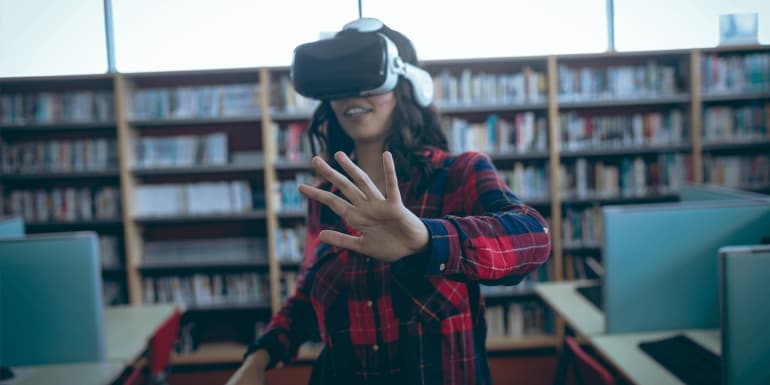Chemist Linda Bush on mixed reality and changing the way people learn
by Robin Beck, Contributor, Pearson

Linda Bush is the Director of STEM, Nursing, Business Studies and Program Development for Smarthinking, Pearson’s Online Tutoring Service. In this role, she manages hundreds of subject expert tutors for college-level online academic support, provides consultative services to client institutions and faculty on optimal integration of online tutoring into their courses, and works on new programs and business opportunities for Smarthinking.
In anticipation of Educause 2018, we spoke with Linda about discovering her love of science, empowering learners, and imagining the possibilities of mixed reality.
Explain your career path to date. How did you come to work in education?
I got my undergrad degree at Bryn Mawr, and I have a PhD in organic chemistry from Yale. I was fortunate to have a mentor in graduate school who was a preeminent scholar and teacher. I learned so much from him about thinking critically, asking the right questions, and considering multiple solutions to problems.
In my work life I’ve had at least three careers so far! I was a chemistry professor, then a freelance media consultant and contributor for a textbook publisher, which sort of led to my third career as Director of Online Tutoring in STEM for Smarthinking and Pearson. All my work has been education focused. I always had such respect for my teachers, and I’m really a nerd, so education was a natural path for me. I love science and chemistry, and I’m drawn to any opportunity to share more about those subjects with anyone willing to learn.
Pearson supports Nevertheless, a podcast celebrating the women transforming teaching and learning through technology. Who or what inspired you to pursue a STEM career?
When I was growing up, our neighbor was a biology lab instructor at a local college, and she would spend hours with me looking at pond water samples under a microscope or collecting and curating bugs and snakes in our shared yards. Also, my dad had a PhD in chemistry, so although he never pressed it, that sort of thing was always on my radar. As I said earlier, I went to Bryn Mawr College, a women’s college with very strong programs in STEM, and that’s when I really found my own calling in chemistry.
I know you worked with Bryn Mawr College recently! Can you share more about the work you and your team did there?
This was really how I got involved with the Pearson Immersive team. There are features of Windows10 Skype which allow enhanced video calls between HoloLens and other devices. In 2016, the Immersive team reached out to Smarthinking to explore the potential use of this type of virtual connection for academic tutoring. I am an active alumna, so I contacted some faculty at Bryn Mawr College to see if they’d help us run some testing and focus groups with students.
Once they had HoloLens devices on campus, the instructional technology team at Bryn Mawr really made the most of them. Students jumped into the project with enthusiasm. There was tremendous interest in students learning programming and coding for mixed reality. Because of Pearson’s partnership with Microsoft, we were also able to sponsor some on-campus internship experiences. We learned a lot about app design from things the students built into their creations.
It was very empowering for those young women to have a hands-on experience with cutting-edge technology. It meant a lot to them to know that they were among a relatively small number of people worldwide who have used and developed content for HoloLens. It also meant a lot to me and the whole Pearson team to be able to share our work with them.
Explain the HoloLens to a six year old.
HoloLens is like a special set of glasses or goggles through which you can see the world around you, but with two additional features: little cameras on the front that map the contours of objects in your environment and allow you to control the device with hand gestures and transparent screens in front of your eyes on which holograms can be projected. Those holograms seem to actually take up space in your environment. While wearing the HoloLens, the holograms have presence in your world and you interact with them as though they are real physical objects.
read more


